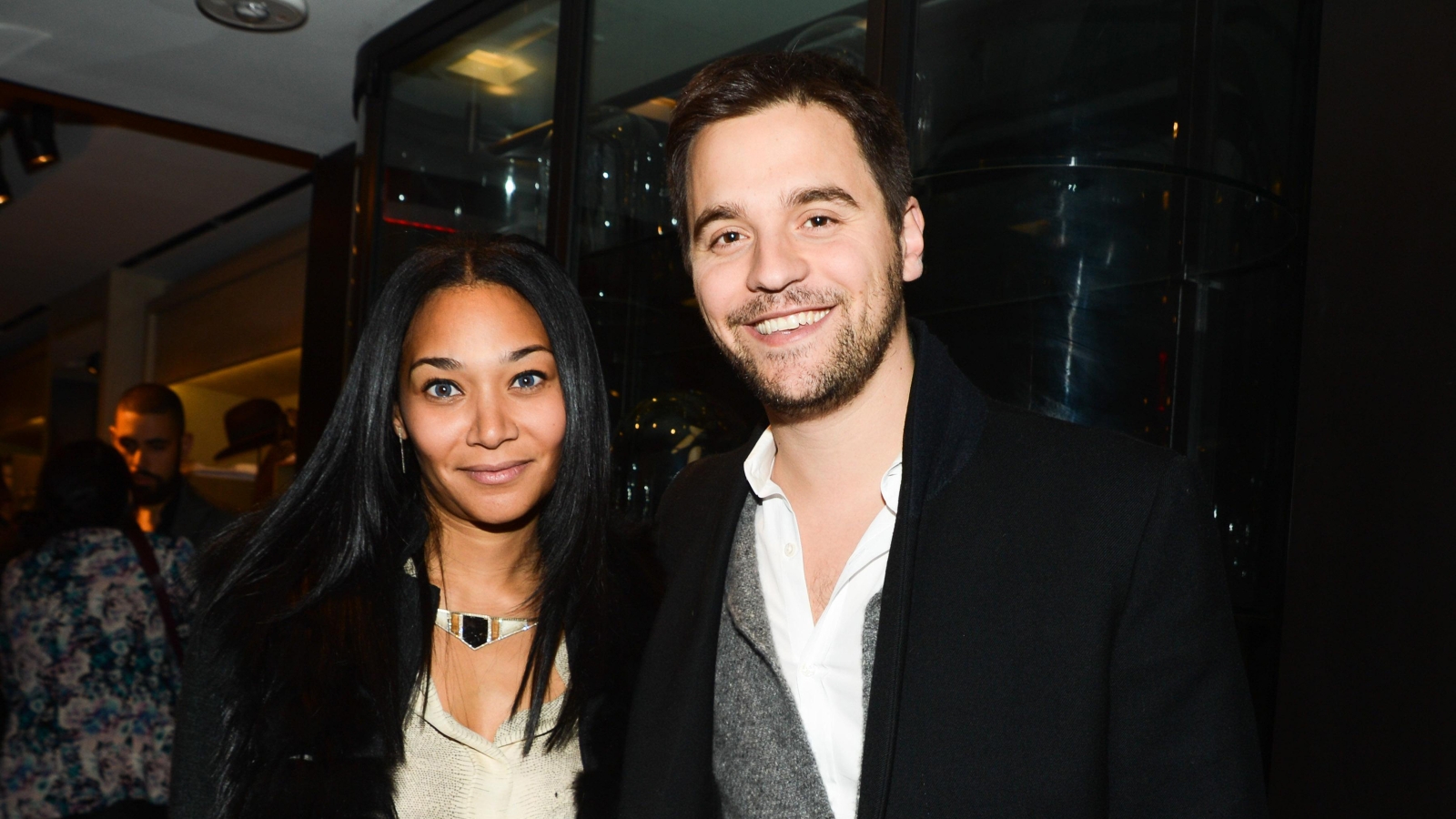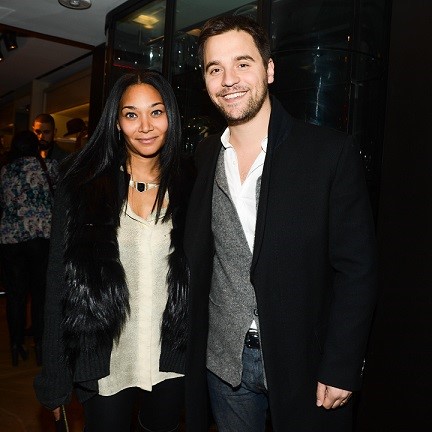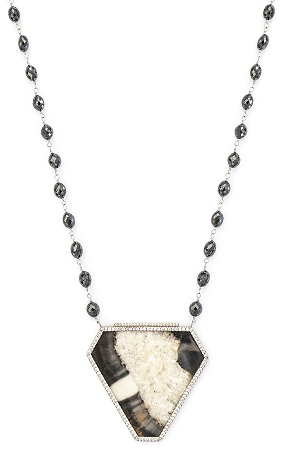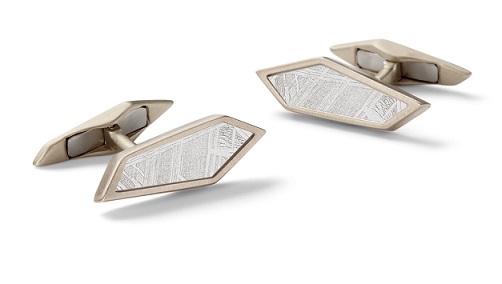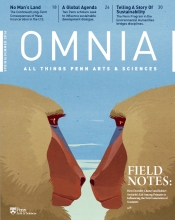A mutual friend brought Monique Péan and Stephen Glass, both C’03, together senior year. Thirteen years later, the two are partners in marriage and business. After a post-Penn stint at Goldman Sachs, Péan started an eponymous fine jewelry company in Manhattan; Glass, leaving behind a career in real estate private equity, joined her a few years later. Launched in 2006, MONIQUE PÉAN now employs 17 people.
Its sculptural one-of-a-kind designs, environmentally friendly practices, and commitment to philanthropy have earned a fan base that includes actors Lupita Nyong’o, Alicia Vikander, and Jennifer Lawrence, as well as First Lady Michelle Obama and style influencers like Vogue, Elle, and W magazines.
Q: How did you meet?
Monique Péan: Our friend Fred Berger, C’03, was having a party. Steve and I were reluctant to attend because we had other plans. Fortunately, we did go or we might not have met. We are still very close with Fred, who officiated our wedding.
Q: Finance to fine jewelry—tell us about the career switch.
MP: My decision to stop working in finance was prompted by the passing of my younger sister Vanessa in a car accident when she was 16. I began taking design classes and found working with my hands was therapeutic. When I went into stores wearing my designs, a few storeowners expressed interest in selling my work, making me think there was an opportunity.
Stephen Glass: I joined the company in 2012. Monique was having a lot of success with the business and needed help. I had traveled with her to Beijing and Shanghai to explore business opportunities in China. When she had to return home early for an event at the White House, I stepped in to lead the meetings. This trip made us realize that we partnered well at work.
Q: What are your unique roles at MONIQUE PÉAN—and what is it like working with your spouse?
MP: I am creative director and CEO and involved in all aspects of the business. One of the most remarkable parts about working with Steve is that I know he cares about the outcomes of a project as much as I do, so I can depend on him to give 180 percent. It’s also nice that we often travel together now—before we both had very busy, but separate, work travel schedules.
SG: As COO, I focus on operations but also work in a number of other areas of the business. When MONIQUE PÉAN was smaller, I was involved with the nitty-gritty; as we’ve grown my role has become more managerial. Monique and I try to divide and conquer, so it sometimes feels that we’re not working at the same company. Other times we collaborate very closely.
Q: Philanthropy, fair trade, and sustainability are core values at MONIQUE PÉAN. How do you decide which initiatives to support and where to source materials?
MP: We support traditional craftsmanship by partnering with artisans around the world. I research sustainable materials before deciding where to travel for my annual design inspiration trip and am always looking for new and unique materials to incorporate into my collections.
For example, traveling through Utah and seeing artist Nancy Holt’s Sun Tunnels, a remote oversized installation in the Great Basin Desert, inspired my most recent collection called SOLCIN. It features materials native to the Colorado Plateau, including fossilized dinosaur bone from the Jurassic age and septarian, a material formed during the Cretaceous period.
SG: Proceeds from MONIQUE PÉAN sales contribute to philanthropic organizations that focus on global health, development, and basic human needs. We have a long-standing relationship with charity: water, which provides clean drinking water and sanitation to people in developing nations. We’re proud to have built clean water wells in Mali, Malawi, Mozambique, Haiti, Ethiopia, and Nepal.
It was natural for us to focus on clean water because of the negative impact mining new gold can have on water supplies and local communities. To avoid supporting environmentally destructive gold mining, we use 18-carat recycled gold as well as found materials and repurposed stones.
Q: In what ways did Penn equip you to build and run an ethically focused design business?
MP: Majoring in political science, economics, and philosophy prepared me to be an entrepreneur and designer. Overall, Penn encourages its students to be inquisitive and examine the world. This analytical approach inspired me to find a new, more environmentally sustainable model for fine jewelry rather than to rely on traditional industry practices.
SG: Studying history taught me how to think critically, weigh the merits of conflicting arguments on any topic, and write effectively. These skills have been extremely useful throughout my career.
Q: From winning a CFDA/Vogue Fashion Fund award to outfitting Olivia Pope’s finger on Scandal, MONIQUE PÉAN has earned diverse recognition, while also promoting sustainable practices. What are you most proud of?
MP: It has been amazing for me to realize a dream of combining philanthropy, design, art, travel, and business by creating sustainable designs that can effect change.
SG: When MONIQUE PÉAN first started, luxury and sustainability were generally seen as mutually exclusive. I am proud of the way Monique has helped to pioneer the principle that the two can coincide. I am also thrilled about the organizations and people that we’ve been able to support through our business.
Q: Do you stay involved with Penn?
SG: Along with donating to the College of Arts and Sciences and the University, MONIQUE PÉAN always looks to hire Penn grads—our first hire was an alumna. Also, Monique has visited campus to speak to students about entrepreneurship and the fashion industry. Penn has had such a positive effect on our lives, and we enjoy supporting the University in many ways.
